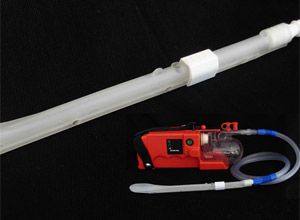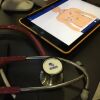Often it is not the complicated and expensive technologies that make a real difference in EMS. It is more often the simple ideas; inexpensive disposable products that make the biggest impact on EMS care.
Many of these ideas have come from people in our industry, innovative care givers that saw a better solution to a longstanding challenge.
I’ve thought back to those simple but innovative products that have really changed street medicine, and compiled a short list. Some of these have been very popular and some less so. All offer important improvements over their predecessors.
Here are just a few of the biggest little ideas in EMS. They are all simple and disposable products that have improved pre-hospital care. Laerdal Medical manufactures all of the first three.
The Laerdal Pocket Mask was designed to offer professional EMS providers a compact tool for effective emergency ventilation. It was the first barrier protection device and it reduced reluctance to perform emergency ventilation.
In the early days before fear of contagion, most EMS providers tried mouth-to-mouth at least once and many, including myself, didn’t much care for it. Remember this was before the disposable BVM, so a resuscitator was not in most individual budgets. Along came the Laerdal Pocket Mask and everyone could afford and conveniently store something to ventilate with.
The Laerdal Stifneck Extrication Collar was the first easily sized and applied rigid collar. Before the Stifneck, we had only soft foam collars. We often called them “neck warmers,” because that was pretty much all they did.
The Laerdal Thomas ET Tube Holder was one of the few and first commercial ETT holders that really worked on the street. It is easy and fast to apply, yet provides a much better way to secure the tube. The screw retainer holds firm and the feeder bar makes sliding the strap behind the head much easier.
SSCOR has long been another leader in simple and effective ideas for improving EMS. While mainly being known for their outstanding suction machines, they have brought to market two important disposables.
Their first was the Hi-D Suction Tip. Also known as the Big Stick Yankauer, this clear plastic yankuer was the first to offer a usefully large internal diameter. The original yankuer has an internal diameter about the size of the lead in a #2 pencil.
They are really not of much value for anything other than saliva. When the patient starts vomiting, they are pretty useless.
 Photo SSCOR The S3 combines the functions of suction catheter, emesis scoop, and suction sump in one disposable adjunct portraits. |
The next improvement on the Hi-D is the more recently released S3. It cleverly combines the functions of suction catheter, emesis scoop, and suction sump in one disposable adjunct.
It combines the Hi-D’s big internal lumen designed for emesis with incredible versatility. If one is not already on your portable powered suction, it probably should be.
Speaking of simple suction devices, my favorite manual suction is the Suction Easy. It is not only the most compact device of its type, it is also the most powerful.
Barely larger than the palm of your hand, the Suction Easy ensures everyone can have real suction in the first-in bag. Previous manually powered suction devices were either too big to be convenient or just didn’t work very well.
The King LTS-D wasn’t the first rescue airway, but it sure was the first supraglottic airway to achieve widespread popularity. The reasons for its remarkable acceptance in EMS are its simplicity and compact form factor.
Unlike the Combitube or Easy Tube, you can fit the King in a standard airway kit. A rescue airway out on the truck when you need it is no rescue airway at all.
Many EMS agencies still use IV catheters to do needle decompression of pneumothorax. The problem is that the soft outer catheters are very soft and easily collapsed in the musculature of the chest wall.
They work as long as the steel needle is still inside the catheter, but once you pull the needle out they often close off and stop working.
The first solution to this problem was the Cook Chest Decompression Needle included in their EMS Pneumothorax Kit. The Cook Needle looks like a standard IV needle, but offers an important improvement.
The catheter sheath is reinforced with a spiral wire molded inside. This prevents it from collapsing when you pull the needle out.
 Photo Covidien The Kendall Argyle Turkel Needle has a spring-loaded color indicator. |
A more recent development is the Kendall Argyle Turkel Needle. The remarkable improvement over previous devices is its spring-loaded color indicator.
As you insert the Turkel needle, the indicator shows red, but when you reach the plural space it instantly pops into green.
This helps make proper insertion far less a blind procedure. It also has a firm outer catheter that resists being collapsed.
The last product I want to mention is the EM Innovations’ Stic Kit Sharps Container. The Stic Kit was the first portable sharps container engineered for EMS.
It’s not only compact and portable, it is also very secure. Only if you know the secret, can you open it once its lid is snapped shut. You can keep it with you for convenient access where you need it and when you need it.
These are some of my favorite game-changing simple ideas that have proven their value to countless EMS professionals.
They are not complicated or expensive but have solved some of our biggest challenges. That is why I call them the biggest little ideas in EMS products.



